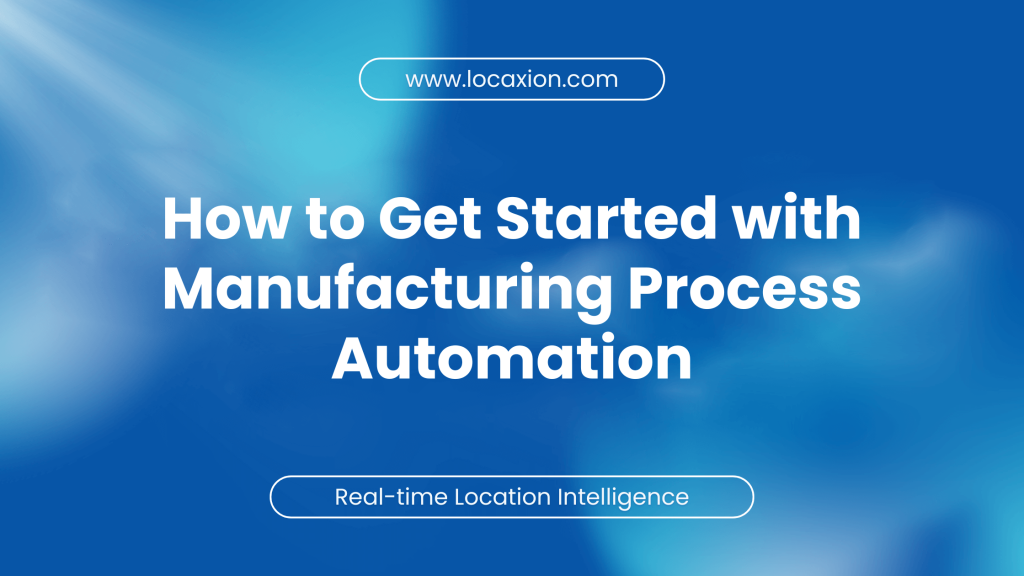In modern supply chain operations, businesses need precise, up-to-the-minute inventory visibility to stay competitive. A real time inventory tracking system helps achieve this by combining technologies like RTLS (Real-Time Location Systems), RFID, BLE, UWB, and Wi-Fi. This guide explains how real time inventory tracking software works, its benefits, and how to implement it effectively.
What is a Real Time Inventory Tracking System and How Does It Work?
A real time inventory tracking system monitors inventory location and status continuously, providing instant updates without manual barcode scanning. By using IoT sensors, RTLS solutions, and cloud-based platforms, businesses can automate stock monitoring and eliminate errors from manual data entry.
Key Features:
- Automated data capture with IoT devices and RFID tags
- Real time visibility of inventory to prevent stock discrepancies
- Location-based tracking of pallets, fleet, labor through RTLS technologies
- Integration with warehouse management systems (WMS)
- Alerts for stock variances and low inventory levels
How RTLS Powers Real Time Inventory Tracking
RTLS technologies form the backbone of real time inventory management by delivering precise location data. Here are the primary methods:
- RFID Tracking. Tags communicate with readers to relay item locations.
- BLE Beacons. Provide accurate indoor tracking for warehouse operations.
- UWB Technology. Offers centimeter-level precision for critical inventory.
- Wi-Fi Tracking. Uses the existing wireless network for inventory visibility.
- Infrared and GPS. Applied in specialized or hybrid tracking scenarios.
Benefits of a Real Time Inventory Tracking System
Implementing a real time inventory tracking software solution brings tangible improvements:
1. Inventory Accuracy
- Reduces manual errors through automation.
- Ensures accurate stock counts and prevents stock outs.
2. Warehouse Efficiency
- Speeds up locating inventory, minimizing delays.
- Streamlines storage and retrieval processes.
3. Demand Forecasting
- Uses real time inventory data to fine-tune restocking.
- Helps prevent overstocking and shortages.
4. Shrinkage Reduction
- Monitors assets continuously to deter theft and loss.
- Tracks item movement for better accountability.
5. Supply Chain Integration
- Enables real time data sharing with suppliers and logistics.
- Improves coordination and reduces process delays.
Steps to Implement Real Time Inventory Tracking Software
- Pinpoint your biggest inventory blind spots (e.g., misplacements, lost pallets, cycle count errors).
- Select RTLS hardware (RFID, BLE, UWB) tailored to your aisle widths, rack heights, and asset types.
- Design tracking zones that mirror your warehouse flow: receiving, putaway, picking, shipping.
- Install readers and tags for seamless, automated location updates—no manual scanning required.
- Use live dashboards and alerts to eliminate stockouts, cut search time, and increase inventory accuracy to +99%.
How to Select the Best RTLS for Accurate & Scalable Inventory Tracking?
- What Are Your Primary Objectives?
- Will the System Go Beyond Inventory Tracking?
- What Is Your Warehouse Environment Like?
- Does the RTLS Support Future Scalability?
- Is Seamless System Integration Possible
- What Are Your Inventory Characteristics?
Selecting the right real-time inventory tracking system is crucial for optimizing warehouse efficiency, ensuring seamless operations, and future-proofing your logistics. Here are key questions to guide your decision:
1. What Are Your Primary Objectives?
Are you looking to improve inventory visibility, eliminate stock discrepancies, reduce manual inventory checks, or enhance order fulfillment speed? Clearly defining your objectives helps in choosing an RTLS asset tracking solution that delivers measurable ROI and addresses your unique challenges.
2. Will the System Go Beyond Inventory Tracking?
Is your goal limited to inventory tracking, or do you plan to extend RTLS to forklifts, pallets, tools, or high-value assets? If your warehouse is transitioning toward a smart warehouse strategy, opt for an RTLS solution that supports scalability. Advanced functionalities like forklift tracking, collision avoidance, and automated route optimization may require additional RTLS infrastructure.
3. What Is Your Warehouse Environment Like?
Environmental factors like metal obstructions, dust, high temperatures, and radio interference impact RTLS performance. In harsh conditions, Ultra-Wideband (UWB) or hybrid RTLS solutions often outperform BLE-based or RFID-based systems, ensuring high-accuracy location tracking.
4. Does the RTLS Support Future Scalability?
Can the system scale as your warehouse operations grow? A future-proof real-time inventory tracking system should expand effortlessly to track increasing inventory volumes, new warehouse locations, or additional assets without major disruptions or costs.
5. Is Seamless System Integration Possible?
Your RTLS should integrate effortlessly with Warehouse Management Systems (WMS), Enterprise Resource Planning (ERP), Manufacturing Execution Systems (MES), and telematics platforms. Seamless connectivity ensures real-time data synchronization, supporting automated inventory updates and streamlined logistics.
6. What Are Your Inventory Characteristics?
- Inventory Size & Standardization: Are all pallets standardized in size, shape, and labeling, or do you manage mixed inventory?
- Tagging Requirements: Will each box inside a pallet require tracking, or will tracking be at the pallet level?
- Individual Item Tracking: For high-value assets, compliance, or traceability needs, does your warehouse require item-level tracking?
By answering these questions, you can select an RTLS-based real-time inventory tracking system that aligns with your warehouse’s current needs while enabling scalability, accuracy, and process automation.
Conclusion
A real time inventory tracking system is essential for businesses looking to enhance accuracy, streamline warehouse operations, and gain instant visibility over their stock.
By using real time inventory tracking software and RTLS technologies, companies can automate inventory management, reduce losses, and make faster, data-driven decisions. Investing in the right solution not only optimizes current operations but also prepares your supply chain for future growth and challenges.
Every day without real-time tracking costs you time and money. Don’t fall behind competitors using smarter systems. See how Locaxion’s inventory tracking solution gives you the edge.




